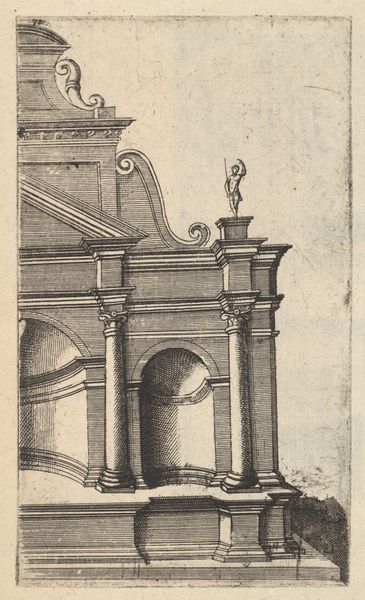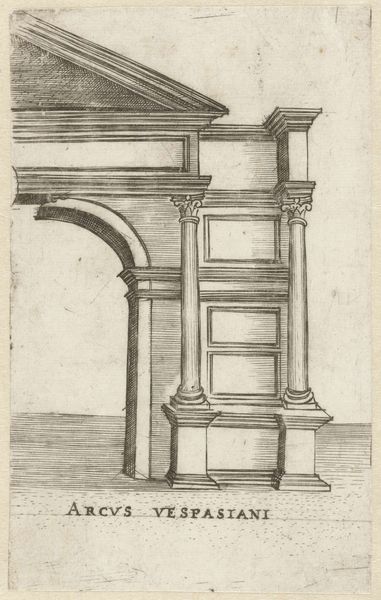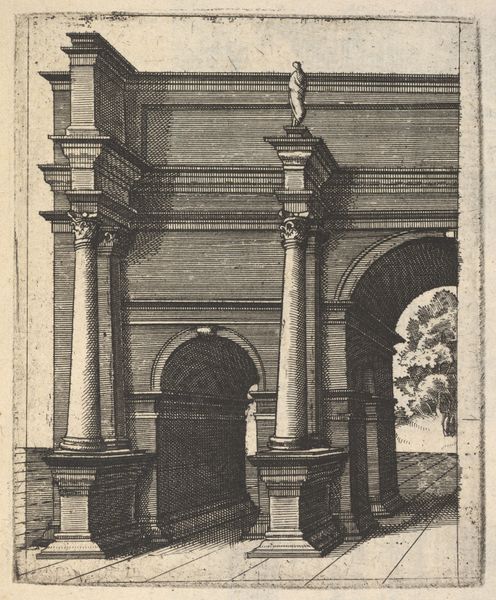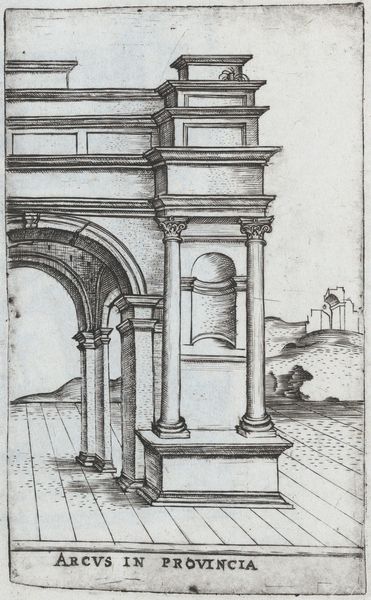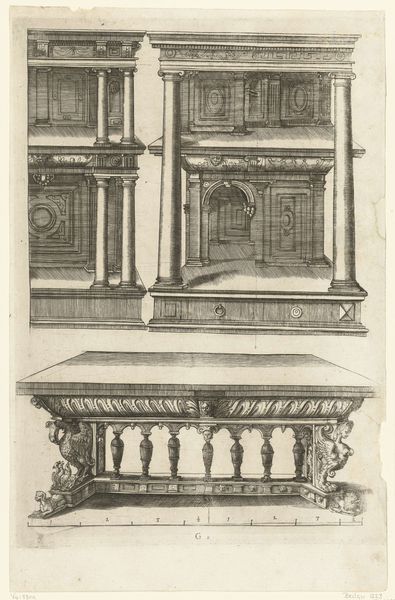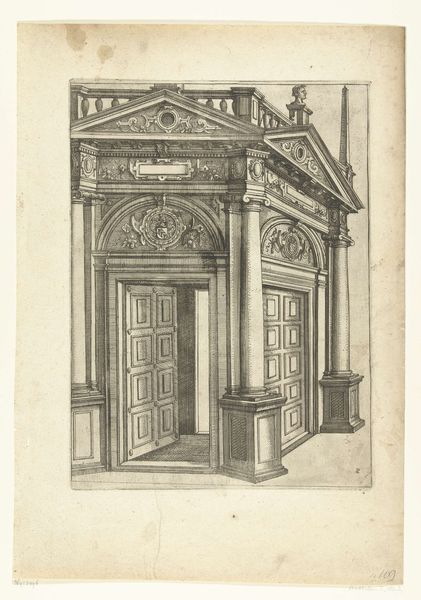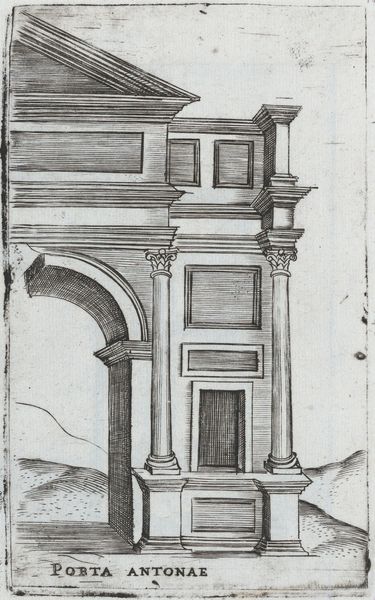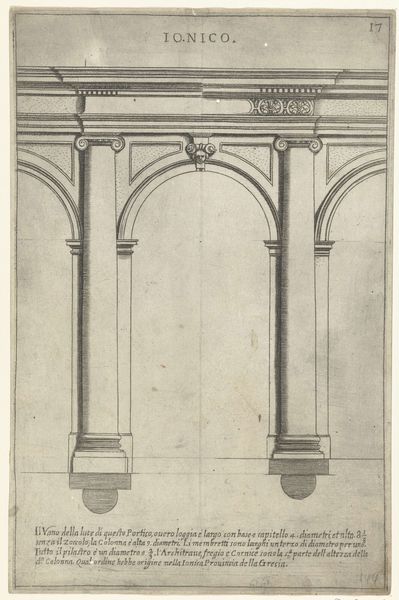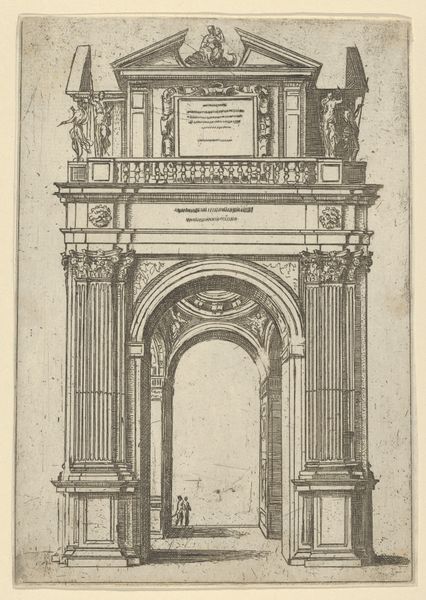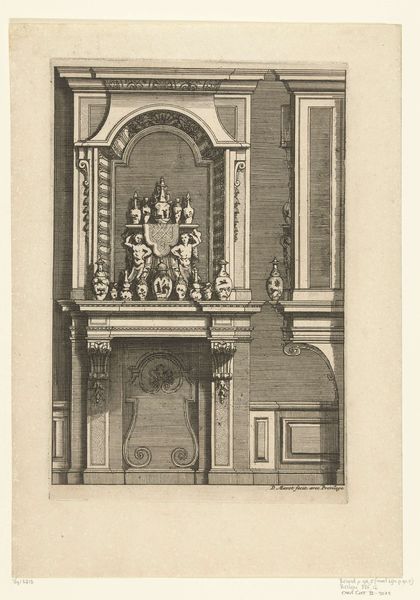![Half of an Arch [Porta Antonae] from the series 'Ruinarum variarum fabricarum delineationes pictoribus caeterisque id genus artificibus multum utiles' by Lambert Suavius](/_next/image?url=https%3A%2F%2Fd2w8kbdekdi1gv.cloudfront.net%2FeyJidWNrZXQiOiAiYXJ0ZXJhLWltYWdlcy1idWNrZXQiLCAia2V5IjogImFydHdvcmtzL2EyNTk5ZjY1LTU5YzgtNDk1OS1hNDYxLTU1YmNkNTU1Y2FlNC9hMjU5OWY2NS01OWM4LTQ5NTktYTQ2MS01NWJjZDU1NWNhZTRfZnVsbC5qcGciLCAiZWRpdHMiOiB7InJlc2l6ZSI6IHsid2lkdGgiOiAxOTIwLCAiaGVpZ2h0IjogMTkyMCwgImZpdCI6ICJpbnNpZGUifX19&w=3840&q=75)
Half of an Arch [Porta Antonae] from the series 'Ruinarum variarum fabricarum delineationes pictoribus caeterisque id genus artificibus multum utiles' 1554
0:00
0:00
drawing, print, intaglio, engraving, architecture
#
drawing
# print
#
intaglio
#
form
#
11_renaissance
#
geometric
#
line
#
cityscape
#
italian-renaissance
#
engraving
#
architecture
Dimensions: Plate: 5 11/16 × 3 7/16 in. (14.4 × 8.7 cm)
Copyright: Public Domain
This print, Half of an Arch, was made in the mid-16th century by Lambert Suavius, using the technique of etching. Etching begins with a metal plate, in this case copper, coated with a waxy, acid-resistant ground. The artist scratches an image into this ground, exposing the metal beneath. Then, the plate is submerged in acid, which bites into the exposed lines, creating grooves. The longer the plate sits in the acid, the deeper the lines become, and the darker they will appear when printed. This allowed artists to create multiple copies of their work, democratizing images and ideas. Note the crisp, precise lines, which capture the architectural details of the arch. Etching allowed for a level of detail that was difficult to achieve with earlier printmaking methods, and was a popular technique for printmakers at the time. The image suggests the culture's fascination with classical antiquity, where architecture and engineering were held in high esteem. By appreciating the printmaking process, we gain a deeper understanding of the artist's skill, the cultural context in which the work was created, and the broader role of prints in disseminating knowledge and art.
Comments
No comments
Be the first to comment and join the conversation on the ultimate creative platform.
